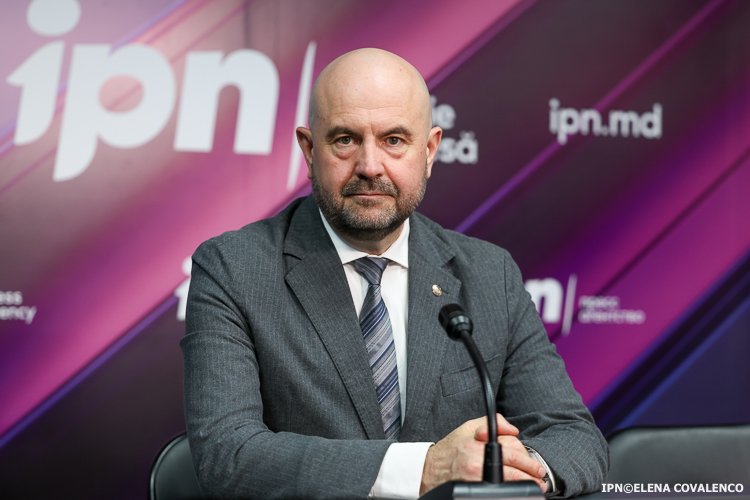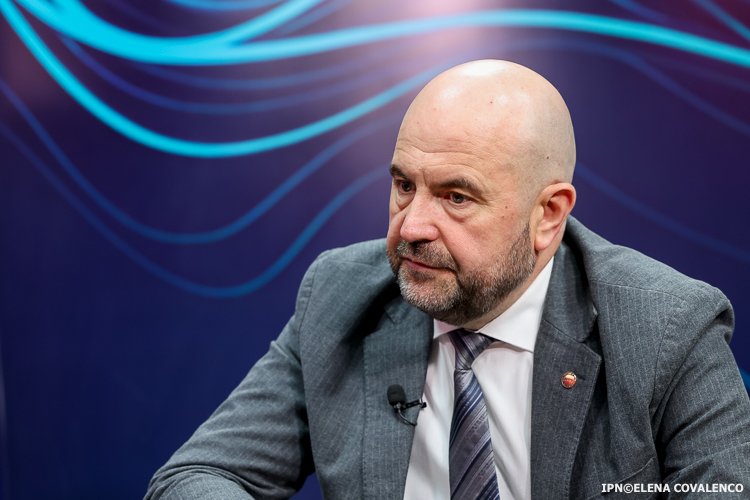The Ministry of Infrastructure is making intense efforts to integrate the Republic of Moldova into the main European trade routes, Minister Vladimir Bolea assures. According to the dignitary, all the actions taken are meant to connect the state to the European networks, and roads are being built in the country for the citizens and economic agents that must benefit from comfort and safety when traveling. There are international and national companies involved in quality constructions, Minister of Infrastructure and Regional Development Vladimir Bolea said in an interview with IPN.
https://www.youtube.com/watch?v=1–BCN1ocQQ
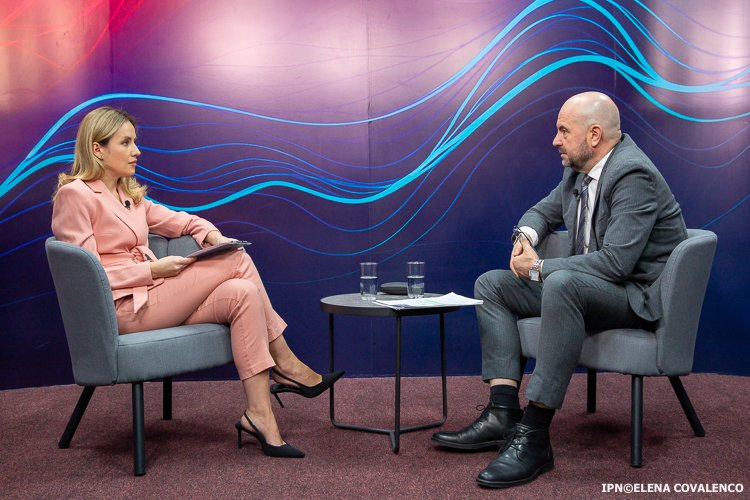
“Intense efforts to integrate Moldova into the main European trade routes“
The Republic of Moldova is an EU candidate country and the development of infrastructure and regional development is one of the main current challenges. What are the most important legislative reforms implemented by the Ministry to achieve the European standards to which the country aspires?
Given that I am in my second term as minister, which differs considerably from the first by the much greater emphasis placed on the transposition of the acquis communautaire and on the implementation of the requirements of the European Union, I want to emphasize that there are no more or less important sectors. They are all equal in importance because they are interconnected.
Maybe some of them are priorities…
No, they are all equally priority! Absolutely all of them, and I will explain why. Infrastructure is essential for the integration of the Republic of Moldova, whether we are talking about roads, naval, rail or air transport, into the European transport networks. One of the problems of the Republic of Moldova is that, in the last 30 years, the governments pursued, for various reasons, a policy of isolation. We have not been sufficiently involved in the European space and we have not had notable results in the cooperation with the Eastern space. We lived, in a way, isolated in our own space, without making any real efforts to integrate. This lack of effort led to our isolation and to the transformation of the Republic of Moldova, from the point of view of trade routes, into an appendix.
Today, the Ministry of Infrastructure is making intense efforts namely to change this state of affairs and to integrate the Republic of Moldova into the main European trade routes. All the actions we take, whether we are talking about roads, railways or flights, are meant to reconnect our country to the European trade networks.
I mean on the European path…
Yes, first of all because the European Union is our direct neighbour. We see that Ukraine also has European aspirations. Starting with 2025, we have been neighbors not only with the EU, but also with the Schengen area. All these things are extremely beneficial for the Republic of Moldova.
The next natural step is the accession to the European Union, which will take place in a few years, after we fulfil all our obligations, including those related to joining the Schengen area. The European Union is an economic, social and political area that can guarantee the sustainable development of our country.
As a proof, since 2021, if we look at the economic and financial data of the economic agents in the Republic of Moldova, we see a significant increase in the exports to the EU.
We are the ones who build roads, develop overhead lines and rebuild railways, interconnecting with the European Union. At the level of the Ministry of Infrastructure, we are currently working on three important chapters of the accession process:
1. Chapter 14 – Transport Policy
2. Chapter 21 — Trans-European Networks
3. Chapter 22 — Regional Policy and Coordination of Structural Instruments
All three chapters went through the screening stage together with representatives of the European Union. We presented a report on the number of legislative documents transposed, the degree of implementation, as well as those to be transposed by accession.
It is clear that when the Republic of Moldova joins the EU, these documents will become part of our basic legislation. We have already had important successes – all the three chapters have successfully passed the drafting stage.
The process continues with the implementation of European legislation through transposition, followed by an extensive stage of communication with the population. Why? Because the economic agents must comply with the new requirements, and this requires investments.
That is why we will use funds from the Growth Plan, which will allow us to support both the entrepreneurs and the state, in order to create a solid development framework.
After the transposition of the legislation, intense public consultations, discussions with economic agents and society as a whole follow. And finally, implementation – for the benefit of all.
Because the European rules, applied correctly, bring real benefits. For example, in the field of road safety: the implementation of EU standards means safer roads and fewer victims. This is a clear and direct example for our citizens.
Another example: we adopted the Aviation Code. It allows today the Chisinau International Airport to operate at European standards. As a result, more and more serious airlines are interested in operating flights to and from the Republic of Moldova.
The more flights we have, the greater is the competition between airlines. And greater competition means better quality services for passengers from the Republic of Moldova and more affordable prices. As a proof, in 2024, approximately 4,029,000 passengers used the Chisinau International Airport – a figure that confirms the effectiveness of the policies implemented.
The impression was created that most of the passengers would be Ukrainian citizens, but, in reality, only around 21–22% of them are from Ukraine. The others are mostly citizens of the Republic of Moldova. The Ministry of Infrastructure actively invests in the expansion of the airport and in the harmonization of aviation legislation, in order to meet the needs of our citizens, but also of foreign visitors.
The transformation of the Chisinau Airport into a regional aviation hub would be a major success. Why? Because such a hub means attracting financial resources, creating jobs and boosting the economy as a whole. This is what we talk about and this is what we work for.
Our ultimate goal is to put the Republic of Moldova on the map of the major European transport routes. When we talk about the highways that will reach Ungheni, we are actually talking about connecting Moldova to the European transport networks, not about avoiding the country. The objective is for the roads to Odessa or the Black Sea to cross the Republic of Moldova, not to bypass it.
This connection would mean the development of cities and villages, the stimulation of trade, tourism and an increased desire to visit Moldova. These are real and valuable opportunities, which unfortunately today are not yet fully accessible, but I am convinced that we will achieve them.
Once the European Highway is completed, it will be much easier to get from the EU to Moldova by road. Today, the road is difficult and long, requiring almost a full day. With the completion of the highway to Ungheni – which the Romanian side will hopefully finish by 2028–2030 – things will change radically.
Moreover, this year, on April 26, we started the construction of a new road bridge – Ungheni-Ungheni Bridge (Flower Bridge). This will represent the end of the highway on the Romanian side and will mark the beginning of the Moldovan segment. Subsequently, the project carried out together with the European partners will continue the route to Chisinau and further, to Odessa.
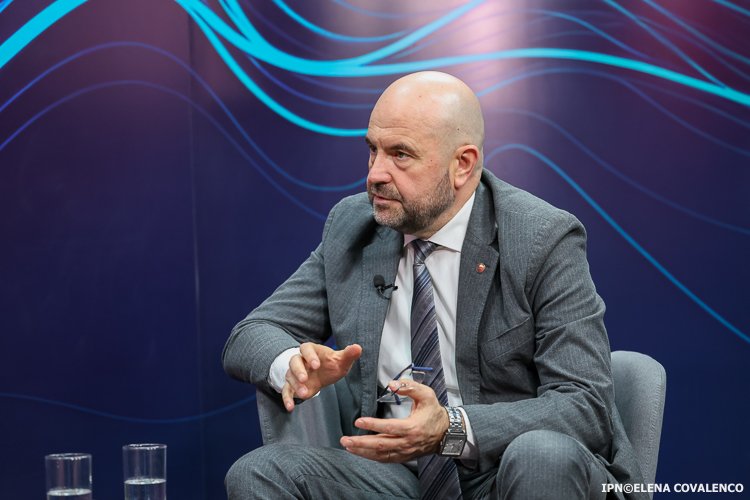
“50% of the roads are in an unsatisfactory condition and require major investments“
As you mentioned the quality of the roads, I want to refer to a recent World Bank report that said that about 50% of the national roads in the Republic of Moldova are in an unsatisfactory condition. We still have a lot of work to do. How does the Ministry intend to overcome this problem and attract more investments for modernization, given that it is an important barrier to reaching European standards?
The Ministry of Infrastructure, through the State Road Administration, manages about 6,000 km of roads. It is regrettable that around 50% of them are in an unsatisfactory state and require major investments.
It takes time and very large financial resources to ensure rehabilitation. After 2022, with the general price increases, construction costs have increased considerably. First of all, we have transposed legislative documents that oblige the construction of roads in the Republic of Moldova to comply with European Union standards. Certified materials, and quality gravel are used, and the certification process improved. This guarantees greater road durability.
The new legislative requirements allowed us to organize international tender contests, especially for large sections of roads. We already have international and national companies involved in quality construction. We are focusing on the development of major economic arteries, such as the connection between the north of the country and Giurgiulesti. It will facilitate the transportation of goods, boost business, and help collect taxes.
The Ministry of Infrastructure builds roads for the citizens and economic agents, who must benefit from comfort and safety when traveling. For example, we completed the first section to Cimislia, and this year we are starting the construction of the Cimislia town belt, in order to reduce pollution and the impact on health. Also, the Comrat town ring road was put into operation, and the Vulcanesti and Slobozia belts are at the phase of contractor identification.
The objective is clear: to create a road corridor from Briceni to Giurgiulesti, avoiding crossing the localities. In parallel, we will rehabilitate the railway segment in Valeni, in order to encourage environmentally friendly and cheaper rail transport.
All these bypasses will contribute to reducing pollution, increasing safety and shortening travel time. In localities, the speed is 50 km/h, outside them it is 90 km/h – an important difference. In addition, we have recently signed a financing agreement with the EBRD and we have very good relations with the EIB. It is an investment of €100 million for the reconstruction of national roads. The exact sections are to be established together with the partners, but we estimate that there will be six sections of road rehabilitated according to European standards.
All these measures are designed for the citizens of the Republic of Moldova, in order to facilitate economic activity and increase the attractiveness of the country for foreign and local investors.
Speaking of European standards, one of the objectives of the European Union is the balanced development of the regions, and the Republic of Moldova is no exception. We must admit that there is a major discrepancy between Chisinau and the rest of the regions. How can this discrepancy be reduced and how can less developed localities be supported?
I will give you some figures that reflect the less pleasant reality. Although the Republic of Moldova is a small country in terms of area and number of inhabitants, the internal discrepancies are very large. For example, the Gross Domestic Product (GDP) per capita in the municipality of Chisinau is five times higher than in the rest of the country.
About 68% of the total volume of capital investments and 81% of the investments financed from the state budget are made in Chisinau. Also, 62% of all economic agents and 72% of the turnover at national level are concentrated in the capital city. As for construction works, 69% of the total volume and 60% of new homes are in Chisinau. At the same time, 50% of the jobs in the formal economy are found in the capital city.
This concentration shows that Chisinau is becoming more dynamic and economically stronger. But we must cooperate, especially with the Chisinau City Hall and the Ministry of Infrastructure, to transform the capital city into a pole of diffusion of development and well-being, not just a pole of socioeconomic absorption.
Today, Chisinau attracts population from all regions of the country, and internal migration is a growing phenomenon. From my perspective, internal migration is often the first step towards permanent emigration.
That is why it is essential that the policies promoted by the authorities, including the Ministry of Culture and the Ministry of Infrastructure, focus on stabilizing citizens in their localities of origin. By developing local infrastructure and improving living conditions, we can encourage people to stay and contribute to the development of less favored regions.
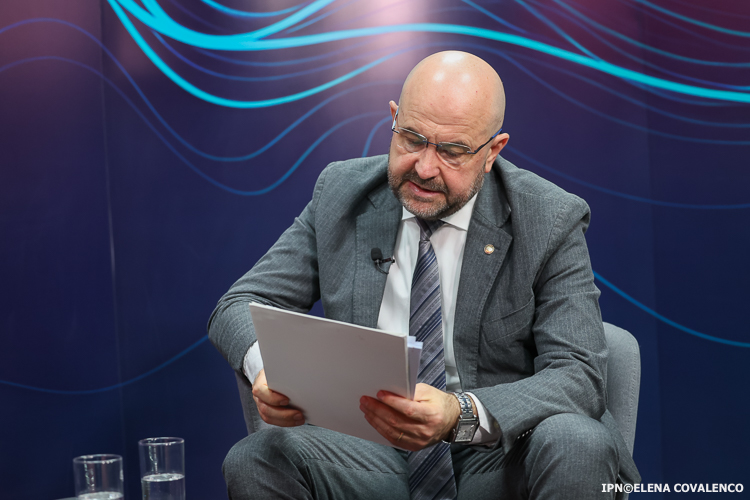
.
“The objective is to ensure the comfort of 2025 in all localities“
This migration takes place primarily due to the lack of jobs…
That is right. In the daily and weekly discussions we have with mayors and district leaders, the main objective we set is to create conditions that allow people to earn a decent living. People do not leave the localities because of the lack of sewerage, but because they do not have opportunities to obtain a stable and sustainable salary. It is essential that the local and central public authorities, at all levels, create these conditions.
The ministries or mayor’s offices do not create jobs directly, but our role is to provide the necessary framework for the business environment to develop sustainably. We have several initiatives in this regard, an example is the program to support the six growth pole towns: Cahul, Soroca, Orhei, Ungheni, and others. Urban modernization programs are being implemented in these cities – public lighting, sewerage, water supply networks, renovation of schools and kindergartens – so that these towns become attractive to citizens and stimulate regional economic development.
It is difficult to develop a business in a very small village, but if you live near a town in full development, such as Cahul, you have much more chances to succeed. Another important project is the capitalization of the Marculesti Airport, which is to be absorbed by the Chisinau Airport – a strong investment opportunity for the north of the country.
The Balti region, for example, has industrial zones, industrial parks, free economic zones, vocational education institutions – everything needed to attract investors. Living costs are lower, rents are affordable, and people can benefit from a decent living close to their families. These are clear advantages for investors who choose the north of the country instead of Chisinau, where everything is much more expensive.
We also have the “European Village” program. This year alone, we have over 700 projects that will be implemented, with a total investment value of over 3 billion lei, of which 2.7 billion lei is managed by the Ministry of Infrastructure, and the rest is the contribution of the local public authorities. At the moment, we have about 700 million lei available, and the rest will come in stages, depending on the progress in the implementation process.
Through this program, we bring infrastructure modernization projects to Moldova’s villages – roads, sewerage, water supply systems, public lighting, energy efficiency – and improve the conditions in schools, kindergartens, houses of culture. The objective is to ensure the comfort of 2025 in all localities: modern infrastructure, quality education, decent living conditions.
On the other hand, the mayor’s offices must create attractive tax conditions for investors, so that they can settle in their localities. This cooperation is already working well in some cases. For example, in Edinet – a growth pole town – the mayor, together with the North Development Agency, supports the development of a free economic zone. The Ministry will invest in the construction of an industrial hall, and there is already a demand for renting the premises. This is a concrete example of success bringing income and jobs to the region.
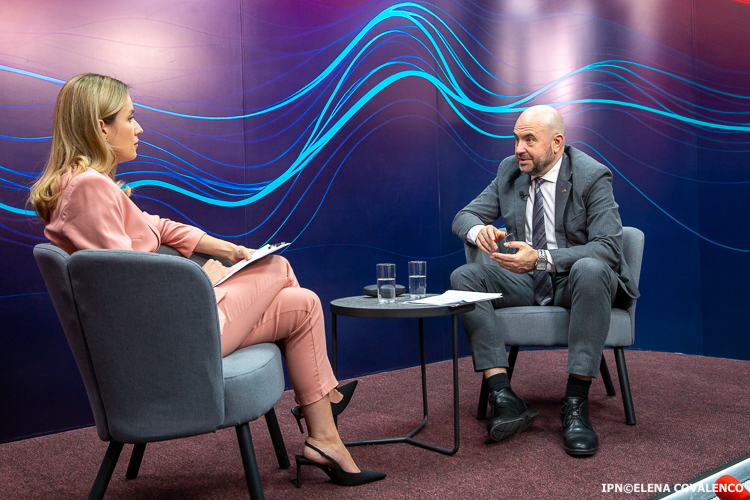
Are you satisfied with the progress that has been made so far?
A lot of work is being done. The most important thing is that all these investments I am talking about are made from national money, not from European funds. So far, we have not received them, we have not yet benefited from them and for this reason we try to invest them with the highest return with the greatest effect, taking into account the priorities, taking into account the way in which all these areas are developed.
“We need to rethink the offers, in order to maintain the trend of increasing exports through the road transport segment“
I would like to raise one more important subject. In fact, you also mentioned that with the coming closer to the European Union, we will have to take more care of the environment in which we live. What is happening in this regard within your institution? What progress is being made in terms of environmental protection, infrastructure, how does the ministry ensure that large projects, roads, railways, industrial areas, comply with those sustainability requirements, which are imposed by the European Union?
At the level of the European Union, the European Green Deal operates and has all the provisions, including for the infrastructure sector. Obviously, we align ourselves and take them into account. If we talk about the transport segment, we promote it as polluters. So, obviously one of the least polluting types of transport is the maritime one, then naval, then rail and, last but not least, we are talking about road freight transport. First of all, it is very expensive, but we promote the policies regarding infrastructure, in order to be able to align ourselves with green and less polluting transport, and most likely we will make 2 transport hubs. So, we will make a hub to the north on the Ungheni segment, most likely to transfer from the road to the railways, including for export, cargo, which goes from the Republic of Moldova, and to the south of the Republic of Moldova. There is the Giurgiulesti state port that we are going to develop so that it also has the railway segment with the possibility of taking over the cargo and loading cargo favorably onto ships to create another hub. So, from the road and the rail to ships so as to be able to export, because there we have the potential to export on the Danube, all the countries that are on the banks of the Danube.
What would be the deadline for carrying out this project?
All work is in progress. Our state port, in 2024, transported over 813,000 tonnes, seeing an increase of 600,000 tonnes compared to 2021. It is a significant development, with maximum efficiency.
I believe that, when we expand the area occupied by this port, it will be able to support the development of the railway infrastructure. We will be able to interconnect and develop a railway line with direct access inside the port, for loading and unloading goods.
All these things are extremely important, especially in the context of fierce competition with the ports of Reni, Braila and others in the region, which are already well developed and have a greater depth and other advantages compared to our port. We are still going to better define our segment. We need to be much smarter and more inventive in our offers to economic agents, so that they choose our port, and not, for example, Reni, which is only 15 km from the customs post and offers a greater depth, or Braila, where you cross the road bridge and are already in a port in a European Union member state.
Therefore, we need to rethink the offers, in order to maintain the trend of increasing the quantities exported through the road transport section.
If we talk about road construction, for example, 30% of the sawdust resulting from milling the old asphalt was reused on the Chisinau ring road, which is an ecological process. The reuse of building materials is an environmentally friendly practice, which does not affect the quality of the works, but has a significant impact on the environment. Such projects and programs are developed by the Ministry of Infrastructure in the road building sector.
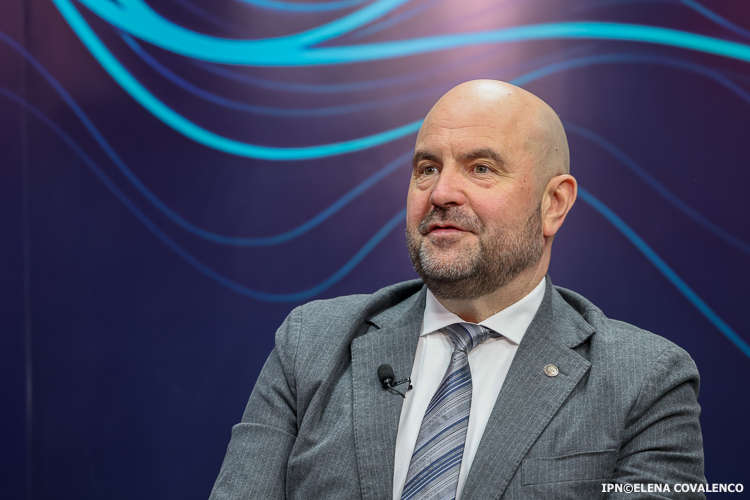
“Interconnection through bridges over the Prut means Moldova’s integration“
We are not going far and I want to continue talking about the modernization of border crossing points, because this is also an important direction – facilitating the free movement of goods and people. What is happening at the moment and what projects are underway? What are your expectations for 2025 in this regard?
In the interwar period, when the Republic of Moldova was part of the same state as Romania, there were 27 bridges over the Prut. Today, we have only 9 functional bridges: 6 road and 3 rail ones. All ways are usable.
In 2025, feasibility studies for four stone bridges are planned to start:
A bridge in Costesti
Another bridge in Cantemir–Falciu
A bridge in Nisporeni
A bridge in the south, in Giurgiulesti, most probably in the lower part of the locality
After the completion of the feasibility studies, the actual construction process will begin. I am convinced that, once built, these bridges will give a strong development boost to the localities they will connect. Today, for example, if you are in Cantemir and want to cross the border quickly, you have to travel to Cahul or Leuseni. In the absence of a nearby crossing point, the connection with the other side of the Prut – where, most of the time, there are also cities – is cumbersome. The new bridges will facilitate this direct connection and will stimulate the economic, social and even political development of the Republic of Moldova. Interconnection through bridges means, in fact, the integration of Moldova into dynamic economic and social cycles, which will radically change the perspective on regional development.
By 2030, how many bridges could we have functional?
Definitely, the Ungheni-Ungheni bridge will be put into operation.
